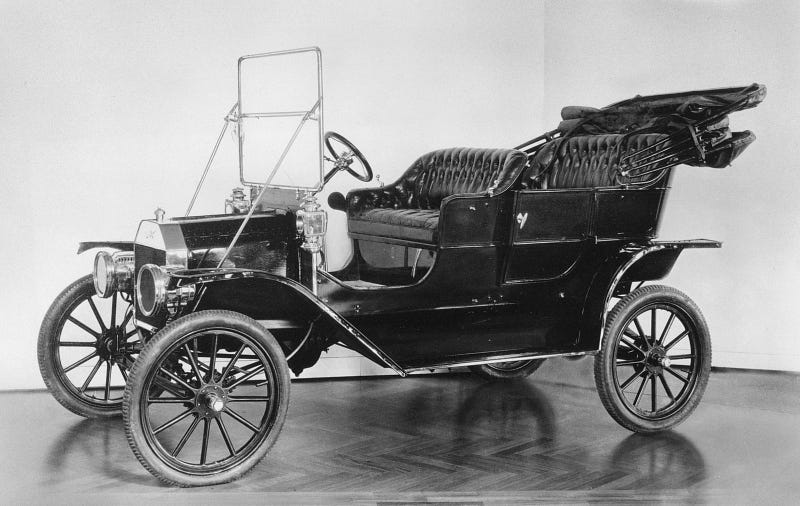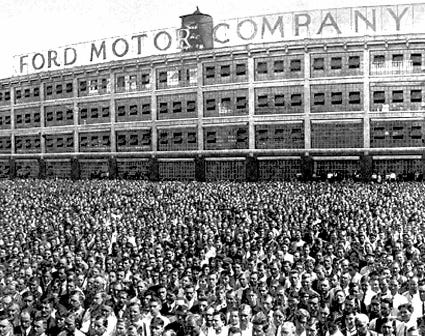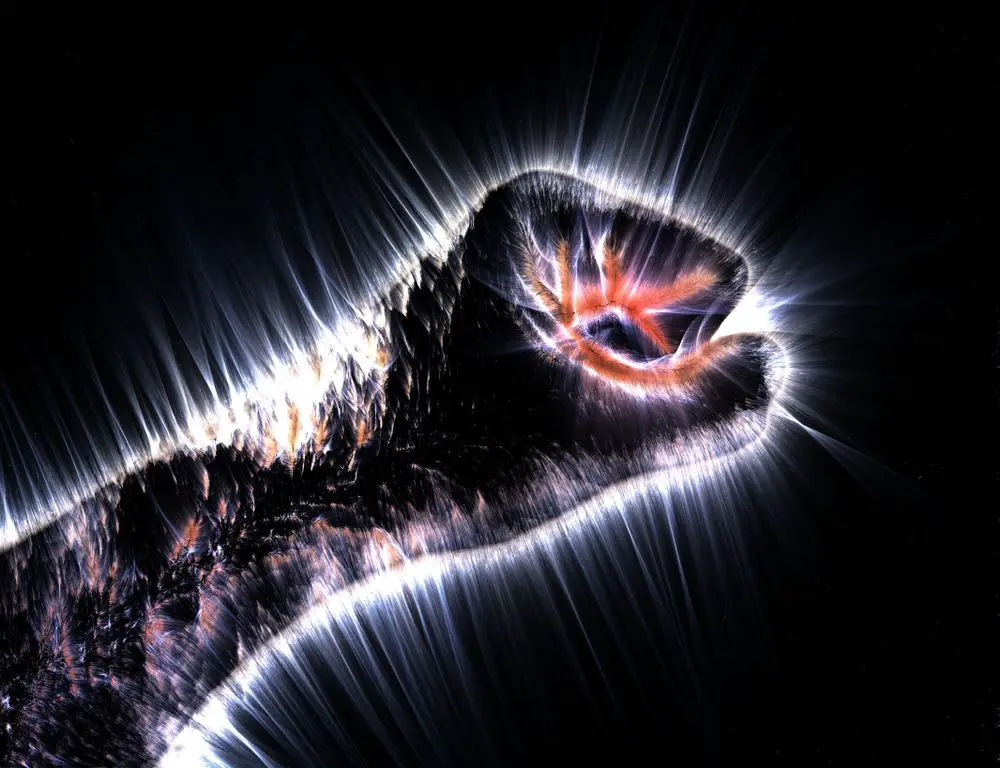 ver 100 years ago, in the city of Detroit, industrialists began the production of the first-ever car, the Ford Model T. The process of industrialization would lead up to certain consequences such as lower prices, higher wages, an 8-hour workday, and lots of confusion in the workers union. Henry Ford, the founder of the Ford company was always talking about a real revolution on a global scale. On January the 6th 1914, thousands of people gathered in front of the Ford factory who wanted to participate in the industrialization project that Ford had in mind.
ver 100 years ago, in the city of Detroit, industrialists began the production of the first-ever car, the Ford Model T. The process of industrialization would lead up to certain consequences such as lower prices, higher wages, an 8-hour workday, and lots of confusion in the workers union. Henry Ford, the founder of the Ford company was always talking about a real revolution on a global scale. On January the 6th 1914, thousands of people gathered in front of the Ford factory who wanted to participate in the industrialization project that Ford had in mind.
The newspapers have blown the very next day and many people were already thinking of migrating to Detroit for better working conditions offered by Ford. major newspapers such as the New York Times or the Wall Street Journal start hunching over the ‘socialist’ Ford, and more and more employees who already had a stable place are taking the Detroit road to apply for a job in Detroit. These possibilities that the industrialist had enthusiastically announced were only a short-term effect. In the long run, some socialists have even begun to discuss the deletion of the boundaries between communism and capitalism, both united in “Fordism”, a phenomenon that Stalin also admired.
Henry Ford (1863–1947)

Henry Ford is still considered one of the best businessmen of the industrial era, he has risen to one of the biggest companies in the revolutionary that still is standing strong to this day. Ford designed the first automobile which is affordable to every working citizen. The way he has achieved this capacity is by becoming an engineer with the Edison illuminating company of Detroit. After his promotion to Chief Engineer in 1893, he had enough resources and time to work on his own gasoline engine.
Ford’s experiment has been approved by Thomas Edison in 1896. Edison actually encouraged Ford to continue with the project by creating a second prototype of the Model T which he finished by 1989. In 1899 Ford resigned from the Company he was working for and founded the Detroit Automobile Company on August 5th, 1899.
The Model T was first presented to the public on October 1st, 1908. The main selling point of the automobile was its affordability to an everyday working man, therefore it came at the low price of $825 in 1908 (today’s equivalent to $23,480). The main reason why Ford T came such a huge success is that Henry Ford was a very good salesman, he went around farms and tried to promote the vehicle to farmers as it would help them with their business. From 1913 to 1914 the sales doubled to 472,000.

The industrial revolution
Ford reduced the number of hours worked from 9 to 8, increased wages from $ 2.34 a day to $ 5 a day and lowered the price of cars from $ 810 to $ 310. And again he was talking about the biggest wage revolution in the capitalist world. An unskilled worker could buy a car in just a few months. It was a technological change that made everything easier after the production line was set in place in the autumn of 1913, the process became general.
The T model was now produced on a treadmill, literally, and it was a huge leap in industrialization. The idea came to him a long time ago, seeing how the slaughter is being done. And he finally decided to replace the stationary production with a more complex process, but also much faster. Previous tests have given Ford security. Instead of 12 and a half hours, the same number of workers could finish a “Thin Lizzy” (the nickname of Model T) in just an hour and a half. Before working in groups to one copy, now each specialized in a single operation. In total, a car was manufactured in 84 steps.

This revolution was born out of necessity, 14,000 employees were working on the production of the automobile, but at the same time, 53,000 employees were changing their jobs. After the industrial revolution when the changes were implemented this figure dropped to only 6500 employees being changed every year because of the dismissal of a skilled workforce as well as higher wages.
Ford regarded the salary as a fair profit for the work that the employee was putting in, however, his increase was still limited by certain legislative conditions. At the start of the 20th century, work was seen as the cornerstone of the world and the root of self-respect. Therefore, cynical dollars were received only by those who had a family or other relatives to maintain, to ensure good living conditions.
Ford’s vision becoming a reality
With the measures of industrial production from 1914 set in place, the factory was able to produce over 4000 automobiles a day. By 1920 Ford had over 200,000 people working for him which brought him the title of the biggest company in the world for that year. The market share was 90% and the buying power was at a very strong point.
Ford had become a true king of the automobile industry. In 1915 he got involved in politics, traveling to Europe on a peacekeeping mission, wishing to mediate between the parties in the war in which the United States had not yet entered. The mission did not have great results, except for an increase in its popularity.
From time to time the newspapers mentioned a possible candidacy for the presidency. But in 1918, when he ran for election to the Senate in Michigan, he suffered a bitter defeat, perhaps because he considered the election campaign useless. Ford felt more like a reformer of society than a politician, as his autobiography puts it. Ford did not even dare to express his anti-Semitism, and he also wrote a book, “The International Jew.” The car king, who has always sought to avoid bank lending, considered the banking world a Jewish scam.

Ford’s rational conception of the industry has greatly contributed to transforming the US into a great economic power, but also into a country of well-being. The Italian Socialist Antonio Gramsci coined the term “Fordism”, associating it with the rationalization of society. The model referred to meant a prosperous, efficient economy, even with the price of limited individuality.
Liberals hailed the white revolution instead of the red revolution. But socialists viewed technical progress as another step in the transition to communism. Stalin was strongly impressed by Ford, believing that a combination of the Russian revolution and American efficiency was the core of Leninism. German socialists, for example, Erich Kuttner, believed that American society was suffocated by consumerism, but that the perfection of capitalism expressed by the maximum productivity achieved by Ford was necessary for the evolution towards communism.
Beyond the politicizing remarks, for Ford, there were only words of praise.
Avid Writer with invaluable knowledge of Humanity!
Upcoming historian with over 30 million views online.
“You make your own life.”





